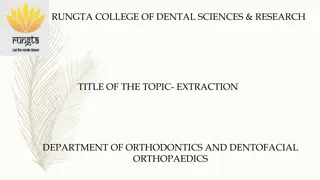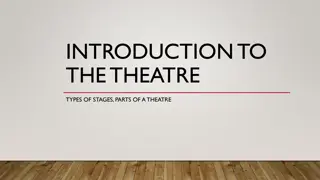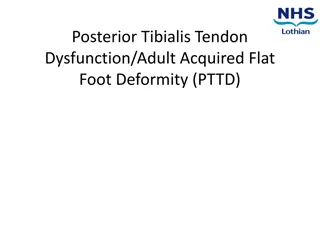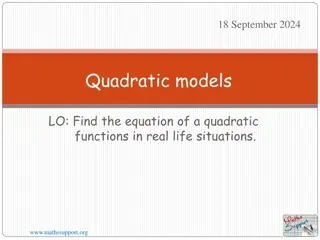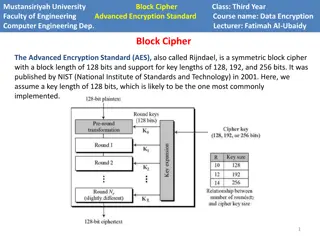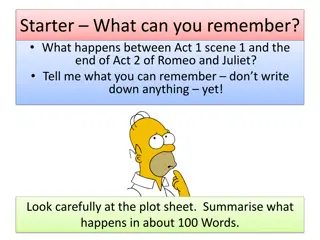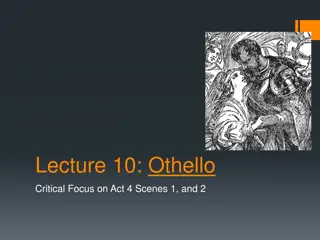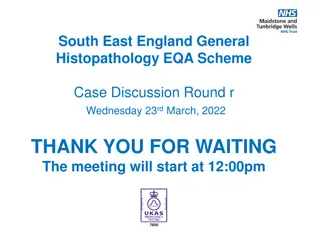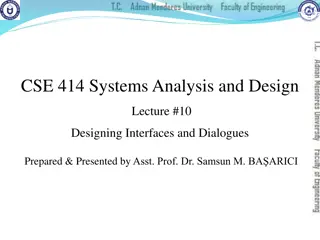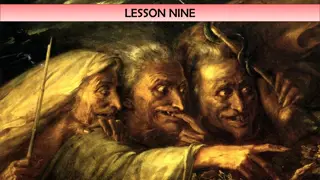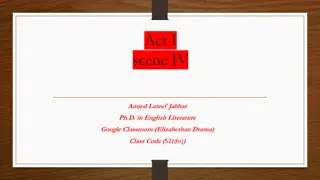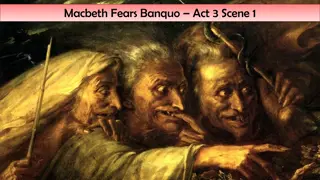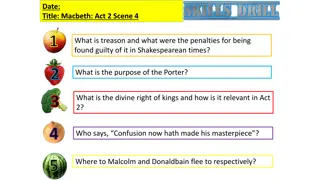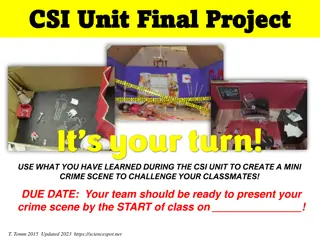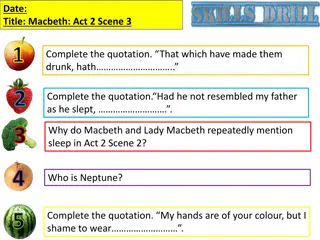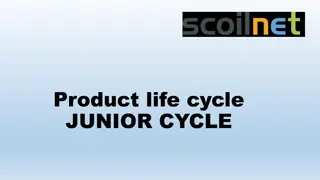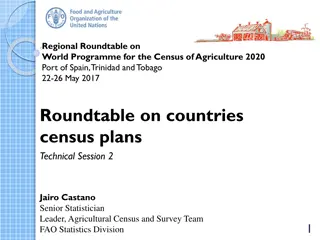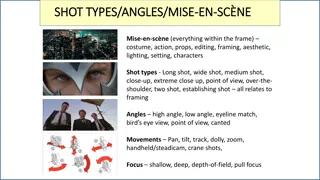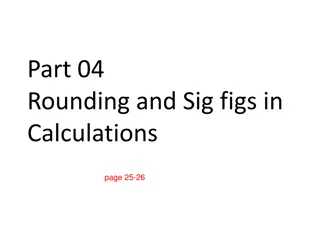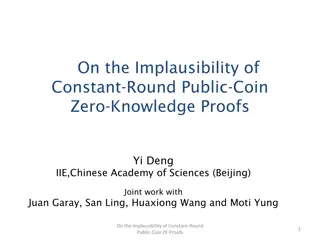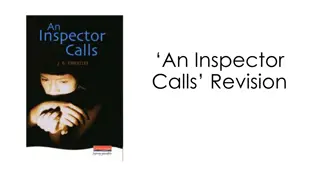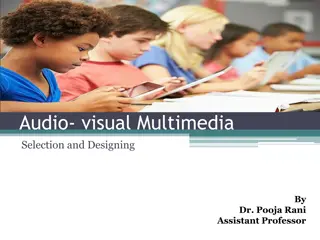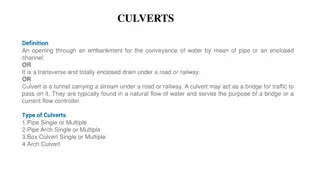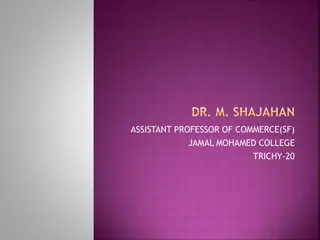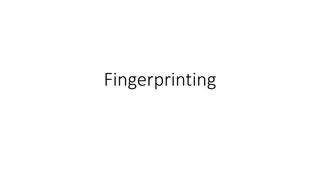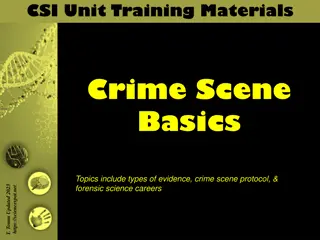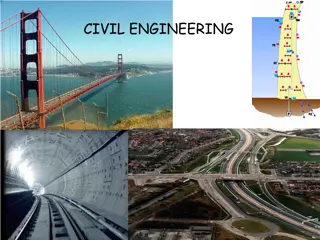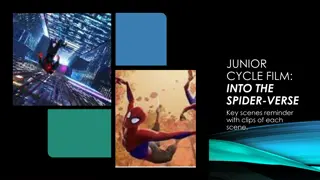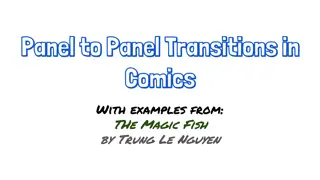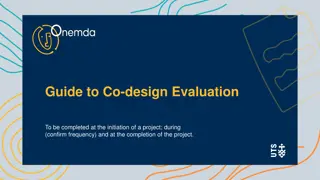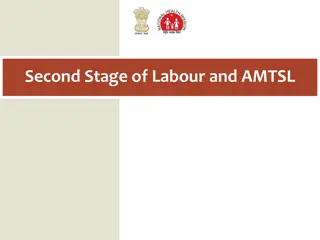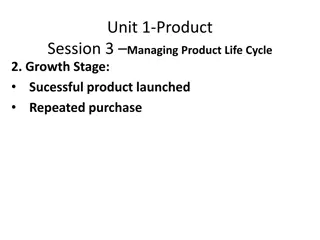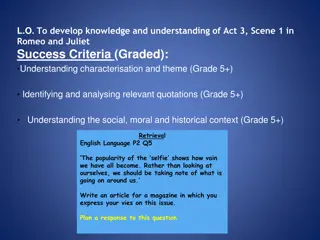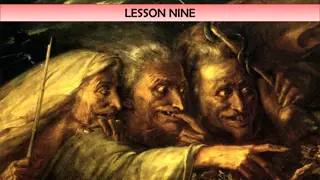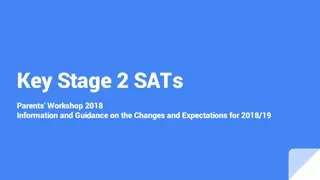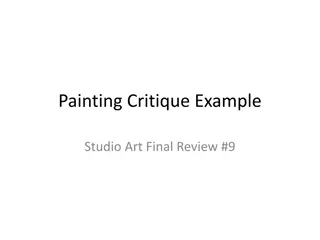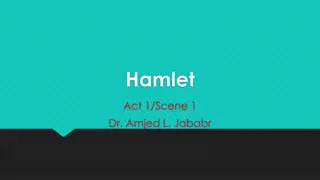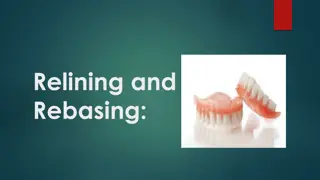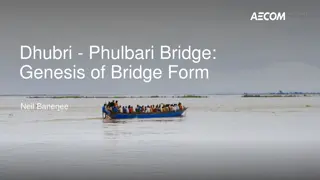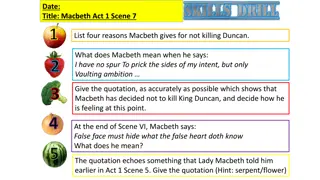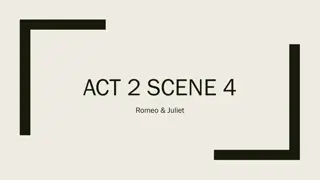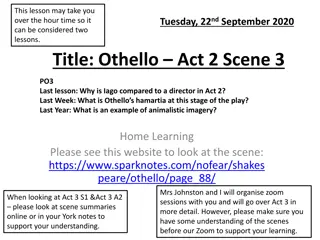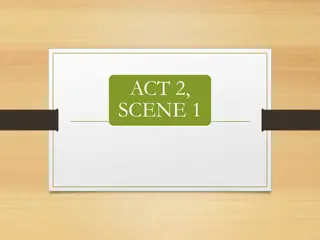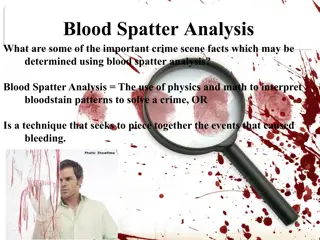Designing a Key Scene for Stage Types: In the Round and Proscenium Arch
Exploring the design considerations for key scenes on two different stage types, In the Round and Proscenium Arch. The strengths and weaknesses for performers and audience members are analyzed, offering insights into creating engaging and effective theatrical experiences.
Download Presentation

Please find below an Image/Link to download the presentation.
The content on the website is provided AS IS for your information and personal use only. It may not be sold, licensed, or shared on other websites without obtaining consent from the author. Download presentation by click this link. If you encounter any issues during the download, it is possible that the publisher has removed the file from their server.
E N D
Presentation Transcript
Staging Questions Explain how at least one key scene can be designed for a XX stage (15)
Starter: Staging Quizzes Without copying anyone else, you need to look carefully at the stages that come up and then in 3 minutes per stage, try to: 1. Name each stage that comes up 2. Offer at least one potential strength and one weakness for the stage for a performer 3. Offer at least one potential strength and one weakness for the stage type for an audience member
1 ?
2 ?
3 ?
4 ?
Stage in the Round Strengths Weaknesses Easy to make the audience feel involved in the action as they are wrapped around the stage. Easy to build tension amongst the audience as this stage type makes them feel as if they are part of the action. No need to project as loudly as on proscenium arch as audience are very close - helps actors to use more dynamic vocals. Audience are all around so actors must keep moving meaning they can play with more planes of movement. Actors must constantly move to avoid having their back to the same section of the audience for too long. Actors cannot get too close to one another as it cuts off the view of a lot of the audience Absolutely no large items of set can be used towards the centre of the stage- only really around the audience, above the stage and audience, floor coverings, lighting and sound can be used to create atmospheres/locations/time periods. Some small furniture can be used too. Lighting and sound equipment cannot be hidden from the audience s view. Performer Will feel involved in the action & tension builds easily. Will see the tiniest elements of the actor s characterisation choices, even from the back row. Will hear everything the actors say clearly and easily Little to block sight lines other than actors moving around and set if it is used incorrectly. Some limited set can still be used in the corners/above/behind the audience without blocking their view. Lighting and sound equipment in full view of audience throughout performance. Little to set the location/atmosphere/time period of the piece due to the lack of set on stage. Actors will always have their back to a large amount of the audience. Audience Member
Proscenium Arch Strengths Weaknesses Performer Audience on one side, so easier to avoid turning back to them. - Can use very detailed set as no risk of blocking audience s view given their position. - Can hide lighting and sound equipment offstage to ensure world presented appears naturalistic - Can perform illusions and hide things from the audience s view to do their limited perspective upon the action i.e. stage combat Difficult to make connection with audience as they can be fairly far from the action - Actors forced to work in a 2D way as the audience are on one side so actors must always turn out to face them - Actors must ensure they project at all times vocally as proscenium arch venues often have audience members quite far from the stage e.g. in the circle or gods/boxes Audience Member - Easy to believe you are watching real life given the detailed sets and the fact that lighting and sound equipment is hidden from view. - Sight lines cannot be blocked so all audience have an easy view of all of the stage Can be difficult to feel involved in the action and therefore it is difficult for the audience to feel tense should the piece require it as they are so distant from the action - Some audience members are so far from the stage that they may struggle to see the actor s smaller performance elements e.g. facial expressions and small gestures
Traverse Strengths Weaknesses Audience are closer so it is easy to make a connection with them Some set can still be used at either end of the catwalk Actors can be more creative in their movement as the audience are on two sides so they have more flexibility in which they can face Actors can avoid turning their back on the majority of the audience if they stand at either of the short ends. - Actors cannot stand too close together for too long or the majority of the audience will see the back of their heads/bodies rather than facial expressions and body language. - No set and very little furniture can be used on the catwalk element of the stage - The lighting and sound equipment cannot be hidden from view. Performer Lack of set on catwalk element of stage and the visibility of lighting and sound equipment means the performance cannot be naturalistic, if the play requires it. The audience on the other side of the stage can be distracting. Actors will, inevitably, have their back to some of the audience for some of the time, no matter how a scene is blocked, unless they only stand at either of the short ends for the whole performance! - Close to actors so can feel more involved in the action. - Easy to see smaller elements of the actor s performances such as their facial expressions and gestures. - Easy to hear the actors due to close proximity to the performance space. - Use of set at either end helps to quickly set location/atmosphere/time. Audience Member
Thrust Strengths Weaknesses Upstage element of stage allows for some naturalistic performance, the thrust element of the stage allows an actor to move forward and be close to the audience/make a connection with them if delivering speeches/moments of non- naturalism. - Some ability to use set in the upstage area of the stage. - Very easy to build tension amongst audience as they are so close to the action. - Very easy to project so the audience can hear you given how close they are to you. No large items of set can be used on the thrust element to avoid blocking sightlines. - Actors will have their backs to some of the audience some of the time when on the downstage thrust element of the performance area. - Cannot hide lighting and sound equipment from audience s view meaning naturalistic pieces are not successful on this stage type. - Lack of set options means actors must create location/atmosphere/time more here than other stage types. Performer Close proximity to the actors means it is easy to see smaller elements of their characterisation such as gestures and facial expressions. - The surrounding effect of the audience around the action makes it easier for them to feel involved in the action/for the tension amongst them to be built. - Little danger of missing the delivery of vocals as close proximity to the actors makes it easy to hear them. Lack of set makes it difficult to place atmosphere/location/time. - Visibility of lighting and sound equipment makes it impossible for an audience to believe they are watching real life. - Audience members on other side of stage can be distracting. - Some actors will have their backs to the audience some of the time meaning facial expressions/gestures may be missed. Audience Member
The Original Staging PRODUCTION FACTS DNA was first written by Dennis Kelly for the National Theatre Connections Programme in 2007. It was performed in the Cottlesloe at the National Theatre, London. It was directed by Paul Miller Set, Costume and Video Design by Simon Daw. The lighting was designed by Paule Constable. Sound Designer Rich Walsh
CREATIVE CHALLENGE The play was originally presented as part of a triple bill with two other plays from the Connections collection: Baby Girl by Roy Williams and The Miracle by Lin Coghlan. Therefore, Miller was tasked with directing 3 shows in one space with a quick turn around and Daw was required to design a set that could be used for all three shows. The answer was an empty stage and projections.
Projections Daw filmed hours and hours of footage of the three locations: the Field, the Street and the Woods. He didn t want a static photo but neither did he want something distracting. He filmed in close up but there was potential for movement, such as leaves blowing in the wind or an aeroplane travelling in the distance across the frame. It created the sense that the characters were somewhere real.
LOCATION The images, like the play text are generalised and non specific, the woods could be anywhere in Britain, as could the field and street. The year could be any year.
Use of Space and Colour USE OF SPACE The grey stage remained bare, if the characters wanted to sit down, they would sit on the floor. The whole space was used, but the action was fairly static as the characters spend much of the time listening to instructions. This allowed the dialogue to be heard and understood by the audience. The acting was stripped down of gestures and unnecessary movement, there was a strength in the stillness and the space between the characters. USE OF COLOUR There was a through line use of the colour blue. The woods were blue, creating a cold, tense atmosphere. The school uniform ties were blue and the plastic bag was blue.
Transitions and Costumes TRANSITIONS The street scene was created by an isolated strip of light downstage. The transitions were swift and stylised movements were kept to a minimum and used as required to get characters from A to B. SFX were used to symbolise the passing of time as opposed to a soundtrack. The sound effect was similar to a whoosh sound. COSTUME The characters wore school uniform, the boys in trousers and the girls in skirts. Each character wore a jacket or hoody to create an individual image and the ties were loosened. Adam s shirt and face was muddied and bloodied.
How to Answer a Staging Question There is no way of knowing what the question will be like, however in the sample material, staging was one of the larger 15 mark questions. Helpfully, they exam board have given bullet points for this question to help you out. Example Question: Explain how at least one key scene could be designed for a thrust stage. In your answer refer to: Structure and style Set Mood and atmosphere How the play as a whole was originally staged.
What does this need? A detailed explanation of the structure and style A detailed description of the set Mood and atmosphere is acknowledged Understanding of how it can be designed for a XX stage Detailed examples References to the text Use of drama terminology
Example Answer You have been given an example answer. Read it carefully. TASK: Highlight and label where it uses: Quotations Drama terminology Abstract ideas that link to the themes of the play Points on the original production woven into the answer
How to answer this sort of question The first key scene I am going to stage is XX. This scene takes place on XXX and XXX has just happened INSERT QUOTE TO SHOW WHAT JUST HAPPENED . I would use XXX (floor, projections, textures, props use quotes to explain WHY you re doing this). Remember to explain the stage type and what stage type you re using. This would contrast/ be similar to the 2007 original National Theatre Connections production by .. Do this again for another scene.
How to answer this sort of question DNA takes place in XXX main locations. XX, XX, etc. The scenes are fairly short and switch between the various locations, showing XX. I would use a simplistic set, that could be lit in various locations of the thrust stage to highlight the specific locations. It would need to be simplistic because although the dialogue is incredibly naturalistic, the swift change in location means sets could be easily manipulated to move to the front of the thrust, depending on the importance of the scene. I would use XXX (insert your set here).This would represent
Write an answer to the question this time, change the question to a proscenium arch stage Success Criteria: Use at least two key scenes in your answer Use all of the bullet points in your answer. Structure (will you have certain scenes such as Phil and Leah, or Jand and Mark staged differently to others?) and style (naturalistic? Symbolic?) Set (What props? Back drop? Lighting? Projections?) Mood and atmosphere (how do your choices support the mood and atmosphere of the key scenes?) How the play as a whole was originally staged (Weave comments about the original production into your answer.) Use drama terminology


